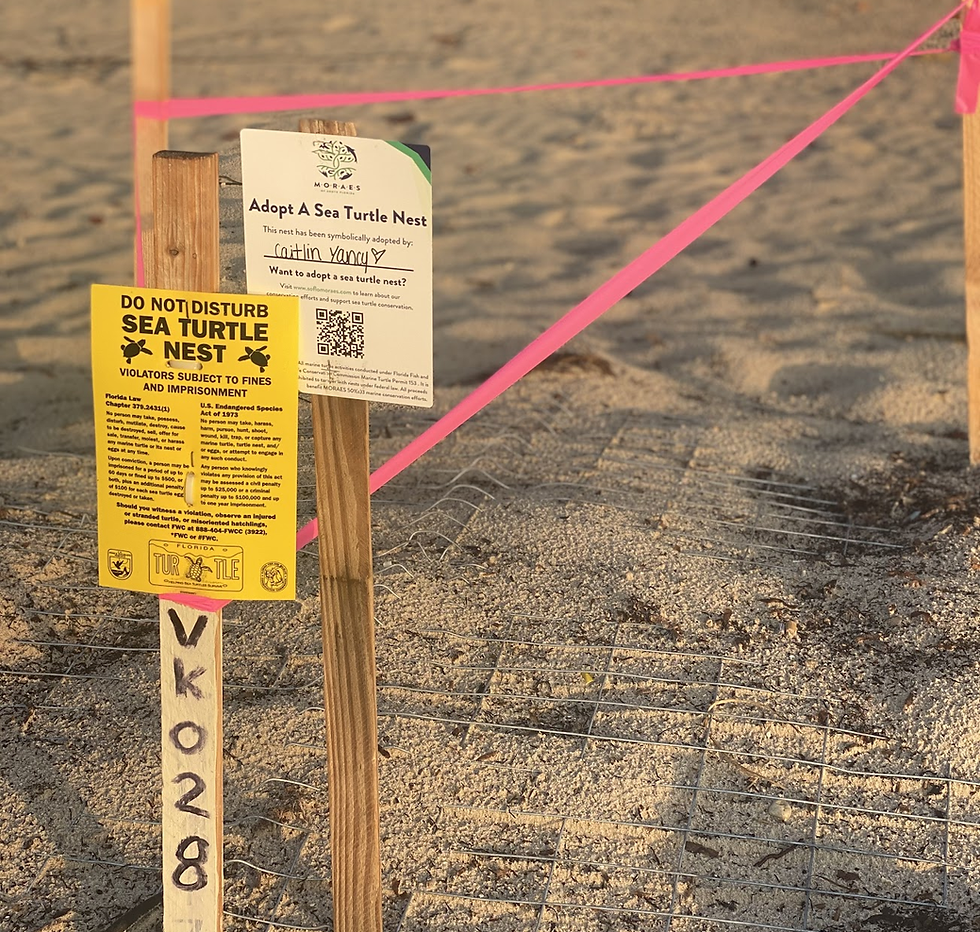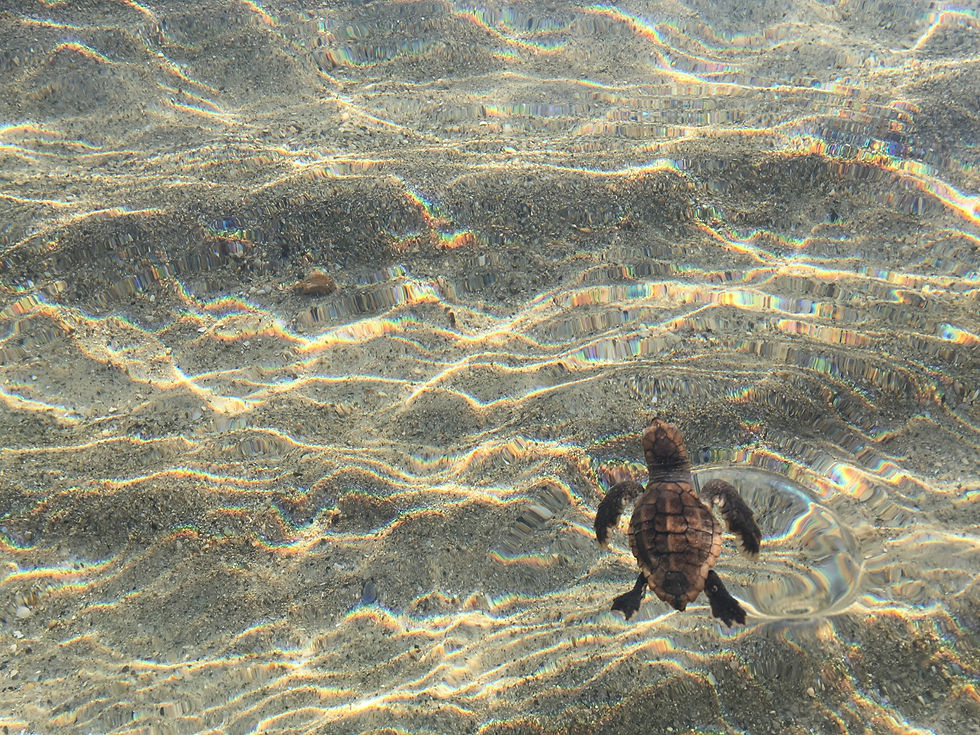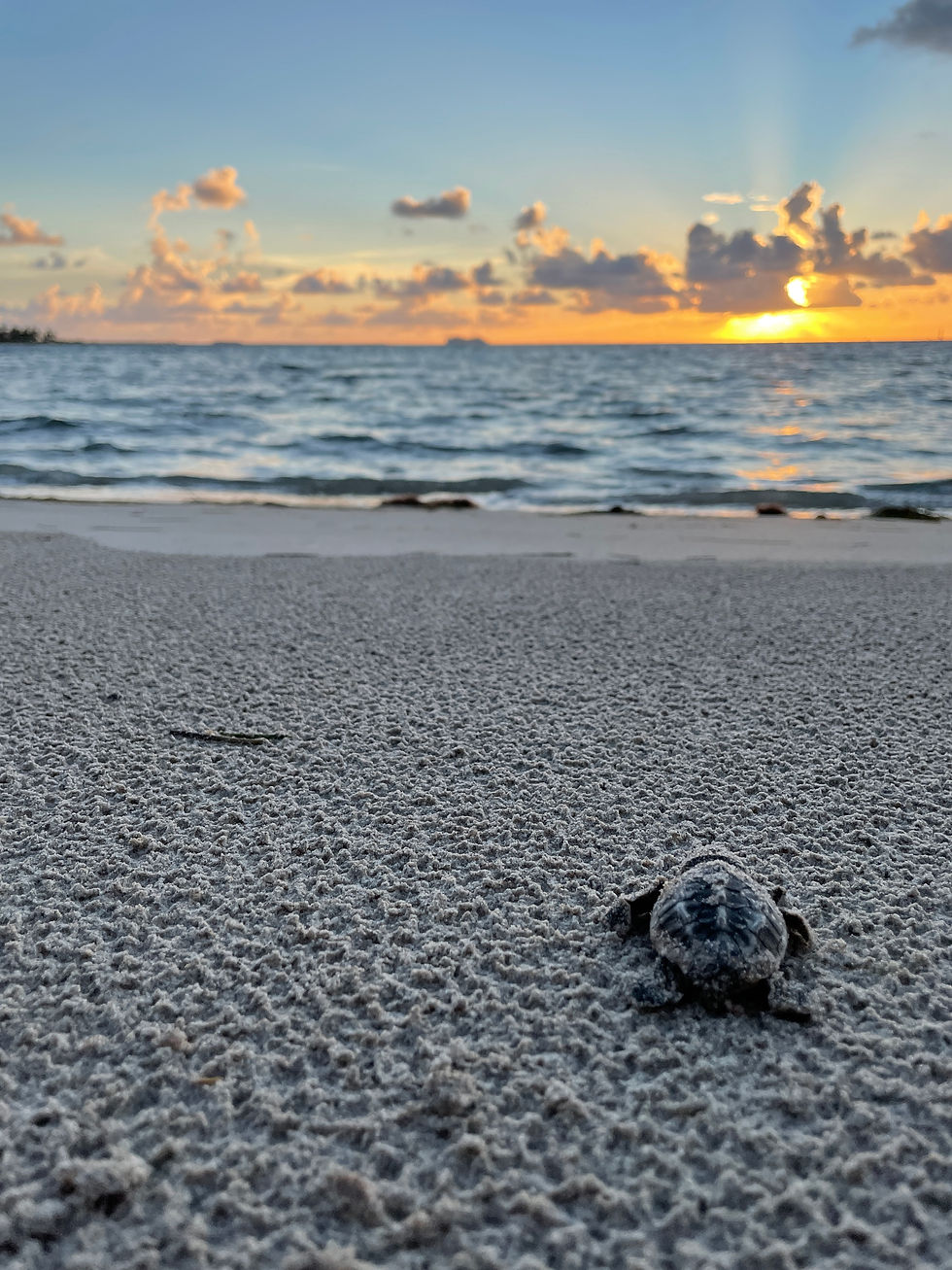
How it Works
Donate
Stake
Hatch

.png)

Donate $100 and receive an official adoption certificate and a photo of your adopted nest!
On the actual nest on Virginia Key, the stake will be marked with your name as the honorary adopter of the nest!
Your stake will remain for the nest's incubation period, an estimated 45 to 70 days. You will then be notified by email when your nest has hatched.
All marine turtle activities are conducted under Florida Fish and Wildlife Conservation Commission Marine Turtle Permit 153. It is prohibited to tamper with nests under federal and state law. If you find a dead, sick or injured sea turtle, please call the Florida Fish and Wildlife Conservation Commission's 24-hour hotline at 1-888-404-FWCC (1-888-404-3922.)
For more information, contact us at info@soflomoraes.com
Check Out What We're Up To!



As a non-profit organization with our hands in a broad array of different environmental fields, we try and align our focus with partners and research opportunities that share our passions and goals. With so many incredible organizations here in Miami and all of South Florida, the opportunities to involve ourselves - but more importantly allow others to involve themselves - has been truly inspiring.
Sea Turtle Nesting Program

Under the FWC marine turtle permit MTP-22-153, MORAES helps with Virginia Key sea turtle nesting survey. Each and every morning throughout the nesting season (May 1st through October 31st), our trained and permitted team lead passionate interns and volunteers across the island’s beaches to monitor, track, and document marine sea turtle nesting activity, most of which focus around the loggerhead sea turtle, Caretta caretta. The data collected from this seasonal project is imperative to track sea turtle population trends and coordinate the necessary conservation efforts on an annual basis. Proper management efforts rely on the information being collected throughout the season to accurately develop new beach polices and adjust regulations, initiate ordinances, and educate the public on the importance of sea turtles within our marine ecosystem.
How it Started...
As our team navigates the Virginia Key Beach coastline, their attention is focused on the sand, specifically the markings created in the sand overnight. As the female sea turtle emerges from the water and crawls up the beach, she begins searching for a suitable nesting. Once a site has been chosen, she will then begin to dig a body pit using all four of her flippers simultaneously before then using her rear flippers to dig a deeper hole for the eggs to rest in. Once the egg laying session is complete and the hole is successfully covered up, she will make her way back down the beach and into the water. She leaves her mark in the sand and we train our team to use these markings to essentially recreate this story.


How it's Going...
If nesting does occur, the site is safely marked off and monitored for the next ~50 days until the hatching occurs. Each site is measured, dated, and marked at a specific location, noting whether any abnormalities occur throughout the process. If all goes well, an average of roughly 80 hatchling loggerhead sea turtles will methodically traverse the beach through sand, sargassum, and predators to enter the ocean and face off against a whole new line of obstacles, hopefully one day returning to the same beach as an adult to continue the amazing cycle.




Adopt a Nest
MORAES is accepting donations for our sea turtle nesting program, giving individuals, families, and/or groups the opportunity to symbolically adopt a nest in their name. This program highlights the importance of protecting sea turtles and their habitats.
MORAES monitors sea turtle nesting on Virginia Key, Miami from May 1 to Oct. 31. Data collected from the nests are submitted to state and federal agencies to monitor management and recovery efforts.
